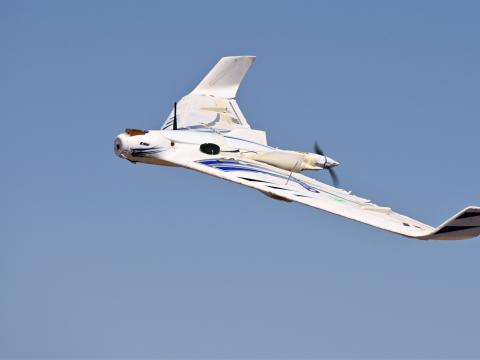President's Commentary: Mechanical Minions Will Change Our Future
Robots, coupled with artificial intelligence, machine learning and other developing capabilities such as the Internet of Things (IoT), are among the latest technologies to offer the promise of labor-saving capabilities, improved efficiency in manufacturing, better precision in the medical field and enhanced capabilities in national security, to name just a few applications.
The past three decades have seen technologies rapidly transform the face of society. Robots, coupled with artificial intelligence, machine learning and other developing capabilities such as the Internet of Things (IoT), are among the latest technologies to offer the promise of labor-saving capabilities, improved efficiency in manufacturing, better precision in the medical field and enhanced capabilities in national security, to name just a few applications.
In the commercial sector, robots tend to be shaped toward economic efficiencies. They lend themselves to repetitive, precise tasks and to this point are not a broad substitute for humans. Yet they will continue to play an ever greater role in manufacturing and production. Capabilities requiring design, manufacturing, assembly, stocking, transportation and product distribution are open to improvements aided or strongly influenced by robots. The integration of these capabilities offers the prospect of lower cost, improved reliability, increased dependability and improved technical support for users.
The use of robots leads to superior design and construction techniques, decreased waste, increased productivity, and improved safety and health conditions. The immediate demand for robotics is inclined to focus on logistics functions with advanced improvements in sensor technology facilitating movement and transportation. One doesn’t have to look far to observe the increased potential of drones in the commercial sector, including everything from the delivery of online purchases to terrain survey for agriculture and from telecommunications to oil and gas exploration and law enforcement.
Robotics is having a dramatic impact on the medical industry, where it is assisting health care professionals to more safely and reliably perform precise procedures that heretofore were considered too dangerous. These include risky spinal and brain surgery, joint replacement and open heart and targeted cancer surgery—procedures that not too long ago were only imagined.
Robots are now increasingly influencing the way wars are fought as they take their place alongside warfighters as teammates in combat. In the future, robots and autonomous machines will increasingly perform vital tasks that today are high risk for warfighters. The machines will be better able to traverse difficult and dangerous terrain and carry out missions that needlessly put warfighters in harm’s way. Missions and roles include logistics, surveillance of enemy forces, battle damage assessment, rapid identification and removal of weapons of mass destruction, targeting, observation and adjustment of fires. They can carry and employ sensors and weapon packages to locate, identify and neutralize enemy capabilities as well as remove and even treat causalities on the battlefield.
The changes robots will bring to the battlefield are analogous to those wrought by the tank in World War I. The mechanized armor did not replace troops as much as complement them. Its biggest effect was to change the nature of ground warfare. Previously developed weapons and tactics had to be abandoned or modified as new capabilities brought new methods of warfighting. Military leaders who recognized this transformation adapted and introduced new concepts of ground warfare in World War II. We can expect the same revolutionary change when robots become major players in the battlespace.
Military researchers already are working on machines that can right themselves when toppled in rough terrain. Robots will be able to jump higher, run faster and enter areas that humans cannot. And, stealth capabilities may render the mechanical devices virtually invisible.
Today, unmanned aerial and undersea vehicles are taking on increased significance in the battlespace. As capabilities such as identification, artificial intelligence and machine learning improve and are integrated into onboard processing, the sensor-to-targeting-to-shooter cycle will improve significantly.
Amid all these efforts lie key enabling technologies, and artificial intelligence, or AI, is foremost among them. AI is most useful when it can tap large datasets for vital information. However, in the battlespace, it may be too difficult or even logistically implausible to access this information. Consequently, robots will need their own enhanced onboard capabilities to access, store and process data that help them make crucial real-time decisions in a changing operational environment. This capability calls for advanced machine learning and improved onboard processing. These enabling technologies will have as great an effect on change as the robots themselves.
Left unsaid, but without a doubt certain, is that lives will be changed by robots. Whether it is from improved medical care, lost jobs, new jobs, less expensive commodities or revolutionary battlespace, humans will have to adjust to the changes wrought by robots and their enabling technologies.




Comment
I have been noticing for some
I have been noticing for some time that, the latest technological developments are viewed very suspiciously by the public.
On the one hand, I can understand this, as the uncertainty about the future sits very deep.
Possible loss of jobs, fears of a technique that is supposed to take over a lot and that one does not understand, AI, etc.
All of these are fears and concerns.
Biologically, this is entirely understandable, because an unknown future is unsettled. It is precisely this reaction before the unknown that has enabled mankind to develop so far.
However, I would like to say that technological progress needs to be looked at very objectively. It is precisely this confrontation with this topic that makes it possible to see the many advantages. It's about getting more individual knowledge. It is precisely the preoccupation with technology that unlocks the potential that is possible.
Comments